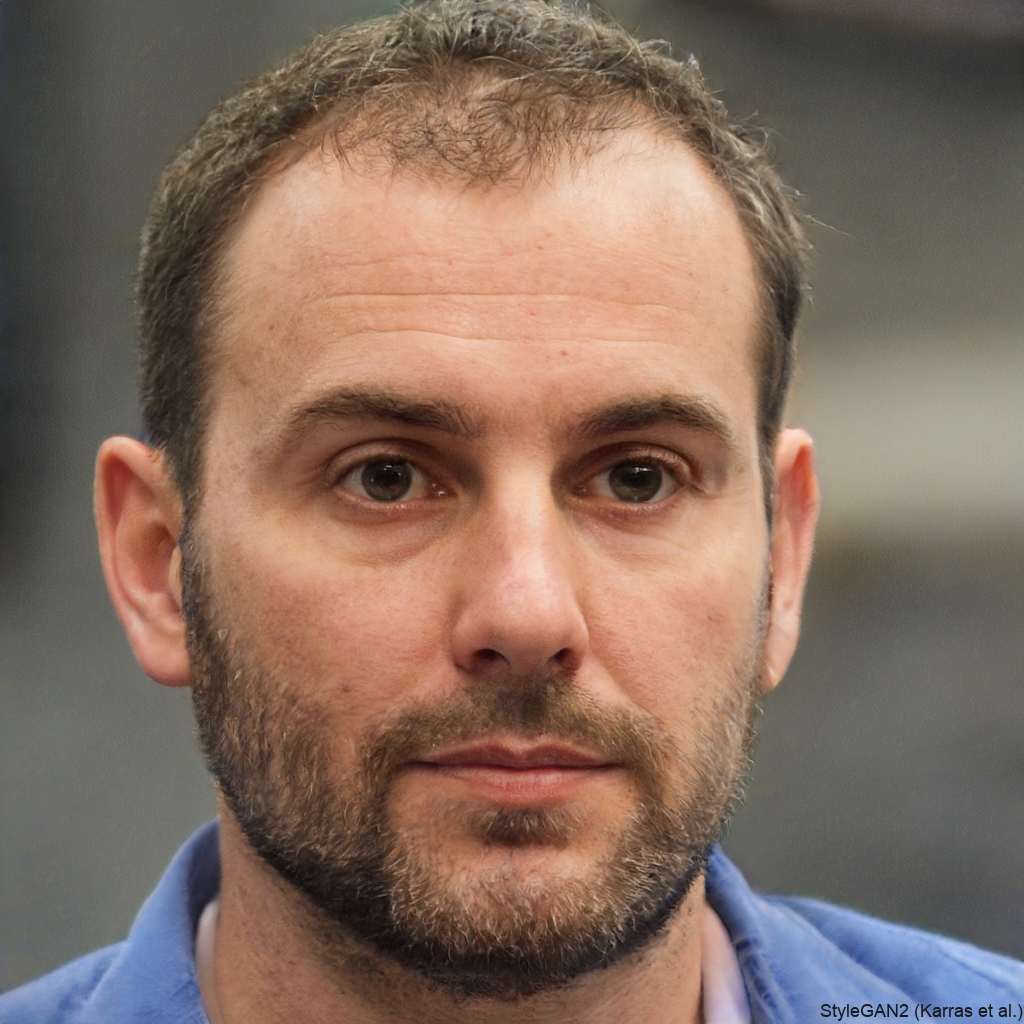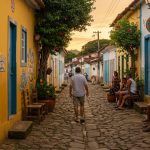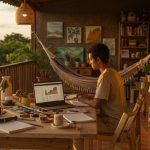Imagine waking up to the sound of waves crashing on a beach in Bali, sipping your morning coffee while checking emails from a co-working space in Lisbon, or closing a business deal from a café in Medellín—all while building a career and exploring the world. Sounds like a dream? For millions of people around the globe, this is now reality. The digital nomad lifestyle has evolved from a niche trend into a mainstream movement, and by 2025, it’s not just possible—it’s practical, sustainable, and more accessible than ever.
The rise of remote work, advancements in technology, and a growing desire for freedom and flexibility have reshaped how we think about work and life. No longer tied to a single location, professionals from all industries are trading cubicles for coastlines, commutes for cultures, and office politics for open skies. But how do you actually make this shift? What does it take to build a life where your passport is your office and the world is your workplace?
In this article, we’ll dive deep into the digital nomad lifestyle in 2025. We’ll explore the tools, mindsets, and strategies that make remote work and travel not only possible but rewarding. From choosing the right destinations and managing your finances to staying productive on the road and building meaningful connections, you’ll get a clear roadmap to design a location-independent life that works for you. Whether you’re a freelancer, entrepreneur, or remote employee, the future of work is mobile—and it’s time to claim your place in it.
Why the Digital Nomad Lifestyle Is Booming in 2025
The digital nomad lifestyle isn’t new, but 2025 marks a turning point. After the global shift to remote work during the pandemic, companies and employees alike realized that productivity doesn’t require a physical office. According to a 2024 report by MBO Partners, over 35 million Americans now identify as digital nomads—a 150% increase since 2020. Globally, the number is expected to surpass 1 billion by the end of the decade.
But it’s not just about working from home. People are now asking: Why stop at home? With high-speed internet available in most corners of the world, cloud-based tools making collaboration seamless, and governments introducing digital nomad visas, the infrastructure is finally in place to support a truly mobile workforce.
Countries like Portugal, Spain, Croatia, and Thailand have launched long-term visas specifically for remote workers, offering tax benefits and simplified residency processes. Meanwhile, platforms like Nomad List, Remote Year, and Workfrom make it easier than ever to find affordable, productive places to live and work abroad.
What’s driving this shift? A mix of practicality and aspiration. On one hand, rising living costs in major cities push people to seek more affordable destinations. On the other, younger generations—especially Millennials and Gen Z—prioritize experiences over possessions. They value freedom, personal growth, and work-life integration more than traditional career ladders.
The bottom line? The digital nomad lifestyle is no longer a fantasy reserved for tech bros or Instagram influencers. It’s a viable, sustainable way of living that’s being embraced by teachers, designers, developers, writers, marketers, and even doctors and therapists who’ve transitioned their practices online.
And the best part? You don’t need to be wealthy or have a six-figure salary to start. With the right planning, mindset, and tools, anyone with a laptop and an internet connection can join the movement.
Choosing the Right Destinations: Where to Work and Thrive in 2025
Not all travel destinations are created equal when it comes to remote work. Sure, Machu Picchu is breathtaking, but if your laptop won’t connect to Wi-Fi, it’s not exactly ideal for a client call. In 2025, the smart digital nomad doesn’t just pick a place based on beauty—they look at infrastructure, cost of living, safety, and community.
Let’s break it down.
Southeast Asia remains a top choice. Cities like Chiang Mai (Thailand), Da Nang (Vietnam), and Cebu (Philippines) offer affordable living, reliable internet, and thriving expat communities. A comfortable monthly budget? As low as $1,200–$1,800, including rent, food, and co-working spaces.
Meanwhile, Europe is catching up fast. Lisbon (Portugal), Valencia (Spain), and Tbilisi (Georgia) have become hubs for digital nomads thanks to their digital nomad visas, mild climates, and vibrant cultures. Monthly costs range from $2,000–$2,800, but the quality of life—and espresso—is hard to beat.
For those seeking adventure with stability, Latin America delivers. Medellín (Colombia), Mexico City, and Panama City offer a mix of modern amenities and tropical charm. Plus, many countries in the region have introduced special remote worker permits, making legal stays easier than ever.
But here’s a pro tip: don’t just follow the crowd. While popular spots have their perks, they also come with downsides—like overcrowding, rising rents, and “nomad fatigue.” Instead, consider emerging destinations like Tirana (Albania), Kuala Lumpur (Malaysia), or Marrakech (Morocco). These places offer lower costs, unique cultures, and fewer tourists—perfect for a more authentic experience.
Key factors to consider when choosing a destination:
- Internet speed (aim for at least 25 Mbps)
- Cost of living (use tools like Numbeo or Expatistan)
- Time zone compatibility with clients or teams
- Healthcare access and safety
- Visa requirements and length of stay
- Availability of co-working spaces and social communities
And remember: you don’t have to stay in one place forever. Many nomads adopt a “slow travel” approach—staying 1–3 months per location. This gives you time to settle in, build routines, and truly experience a place without the stress of constant packing.
Essential Tools and Tech for Staying Productive on the Road
You can’t run a business or manage a remote job with spotty Wi-Fi and a dying laptop. In 2025, the digital nomad’s success hinges on reliable tech and smart digital habits.
First, your core setup:
- A lightweight, durable laptop (MacBook Air, Dell XPS, or Lenovo ThinkPad are popular choices)
- Noise-canceling headphones (essential for calls in noisy cafés)
- Portable Wi-Fi hotspot or eSIM (like Airalo or Nomad) for backup internet
- Power bank and universal travel adapter
- Cloud storage (Google Drive, Dropbox) and password manager (1Password or Bitwarden)
Next, productivity tools:
- Communication: Slack, Zoom, and Microsoft Teams keep you connected with teams.
- Project Management: Notion, Trello, or Asana help you stay organized across time zones.
- Time Tracking: Tools like Toggl or Clockify are great for freelancers billing hourly.
- Automation: Zapier or Make.com can automate repetitive tasks—like saving email attachments to Google Drive.
But tech is only half the battle. The real challenge? Staying focused.
Working from a beachfront villa sounds romantic—until you realize the sun is in your eyes, the Wi-Fi drops every 10 minutes, and your laptop battery dies mid-presentation. That’s why successful nomads treat work like a ritual.
Here’s how to build a productive routine on the road:
- Start your day at the same time (even if you’re in Bali).
- Use the Pomodoro Technique (25 minutes of work, 5-minute break) to maintain focus.
- Block out “deep work” hours when your brain is sharpest.
- Set up a dedicated workspace—even if it’s just a quiet corner of a co-working space.
And don’t underestimate the power of digital detox. Constant connectivity can lead to burnout. Schedule offline time to explore, journal, or simply enjoy the moment. After all, the point of being a digital nomad isn’t just to work from anywhere—it’s to live from anywhere.
Making Money While You Travel: Income Streams for Digital Nomads
Let’s be real: the dream of working and traveling only works if you have a steady income. The good news? In 2025, there are more ways than ever to earn money remotely.
Here are the most popular and sustainable options:
1. Freelancing
Platforms like Upwork, Fiverr, and Toptal connect skilled professionals with global clients. Whether you’re a writer, designer, developer, or marketer, you can build a client base that pays in USD or EUR—while living in a country with a lower cost of living. Many freelancers earn $3,000–$8,000/month, giving them the freedom to travel comfortably.
2. Remote Full-Time Jobs
More companies are hiring remote employees, especially in tech, customer support, sales, and HR. Websites like We Work Remotely, Remote OK, and FlexJobs list thousands of legitimate opportunities. These roles often come with benefits, stability, and predictable income.
3. Online Businesses
From e-commerce stores (via Shopify) to digital products (e-books, courses, templates), building your own business gives you ultimate freedom. It takes more upfront work, but the long-term payoff is worth it.
4. Teaching and Coaching
If you’re fluent in English or have expertise in a field (yoga, coding, finance), you can teach online via platforms like Preply, Outschool, or Teachable. One-on-one coaching or group programs can also generate recurring revenue.
5. Affiliate Marketing & Content Creation
Blogs, YouTube channels, and Instagram accounts focused on travel, productivity, or niche hobbies can earn through ads, sponsorships, and affiliate links. It’s a long game, but many nomads turn their passion into profit.
Pro tip: Diversify your income. Relying on one client or platform is risky. Instead, combine a full-time remote job with freelance side gigs, or pair coaching with digital product sales. This creates a safety net and gives you more flexibility.
And remember: location arbitrage is your friend. Earning in a strong currency (like USD or EUR) while spending in a weaker one (like Thai Baht or Colombian Peso) can stretch your money further—sometimes doubling your effective income.
Managing Finances and Taxes as a Global Worker
One of the biggest fears nomads face? “What about taxes?” It’s a valid concern—but with the right approach, it’s manageable.
First, understand your tax residency. Most countries tax residents on worldwide income. If you’re in one place for less than 183 days, you may not be considered a tax resident. But rules vary, so research each country’s laws—or better yet, consult a cross-border tax advisor.
Popular strategies include:
- Becoming a tax resident in a low-tax country (like Portugal under the NHR program or Georgia).
- Using double taxation treaties to avoid paying taxes in two countries.
- Keeping meticulous records of income, expenses, and travel dates.
Banking is another key piece. Traditional banks often charge high fees for international transactions. Instead, digital banks like Revolut, Wise, and Neon offer multi-currency accounts, low FX fees, and easy international transfers.
Budgeting tools like Monarch Money, You Need a Budget (YNAB), or PocketGuard help you track spending across currencies and set financial goals.
And don’t forget insurance. Standard health plans rarely cover international stays. Invest in global health insurance (like SafetyWing or Cigna Global) and consider travel insurance for emergencies.
Here’s a simple financial checklist for nomads:
- Open a multi-currency account
- Automate savings and bill payments
- Track expenses in real time
- Set up a tax-friendly structure (e.g., LLC or offshore company, if needed)
- Keep 3–6 months of expenses in an emergency fund
The goal isn’t to become a financial expert overnight—it’s to build systems that protect your income and peace of mind while you explore.
Building Community and Avoiding Loneliness on the Road
Let’s talk about the elephant in the room: loneliness.
After the initial excitement of traveling wears off, many nomads face isolation. You’re surrounded by new faces, but forming deep connections takes time. Without a stable social circle, it’s easy to feel disconnected—even while “living the dream.”
The solution? Intentional community-building.
Start by joining nomad-friendly co-working spaces. Places like Dojo in Bali, Sun and Co in Tulum, or Hubud in Ubud are designed for remote workers. They offer not just desks and Wi-Fi, but events, workshops, and networking opportunities.
Use apps like Meetup, Bumble BFF, or Facebook groups to find locals and fellow travelers. Attend language exchanges, hiking meetups, or cultural events. You’d be surprised how fast friendships form over a shared love of empanadas or sunsets.
Another powerful tool? Nomad retreats. These 1–4 week programs combine work, travel, and community. Companies like Escape the City, Outsite, and Workaway host curated experiences where you live and work alongside other professionals. It’s like summer camp for adults—with Wi-Fi.
And don’t underestimate the power of routine. Doing the same yoga class every week or visiting the same café can help you feel grounded and recognized. Familiarity breeds connection.
Finally, stay in touch with loved ones back home. Schedule regular video calls, send postcards, or start a travel blog to share your journey. Emotional roots matter—even when your physical ones are always moving.
Sustainability and Responsibility: Traveling Light, Living Right
As the digital nomad movement grows, so does its environmental and social impact. Over-tourism, rising rents in popular destinations, and carbon emissions from frequent flights are real concerns.
The responsible nomad of 2025 doesn’t just take from the places they visit—they give back.
Here’s how to travel sustainably:
- Choose slower, lower-impact transportation when possible (trains over planes).
- Support local businesses—eat at family-run restaurants, buy from artisans, use local guides.
- Minimize waste: carry a reusable water bottle, avoid single-use plastics, recycle.
- Offset your carbon footprint through platforms like Gold Standard or Terrapass.
- Respect local cultures and customs—learn basic phrases in the local language, dress appropriately, and ask before taking photos.
Many nomads are also embracing “slow living”—spending longer in one place, volunteering, or participating in cultural exchange programs. It’s not about ticking off bucket lists, but about forming real connections and leaving a positive footprint.
And remember: you’re a guest, not an influencer. The goal isn’t to curate a perfect Instagram feed, but to live authentically and respectfully.
The Future of Work Is Mobile—And It’s Already Here
We’ve come a long way from the days when “working from home” was seen as a perk. In 2025, the future of work isn’t just remote—it’s mobile, flexible, and human-centered.
Companies are adapting. Google, Shopify, and Dropbox now offer “work from anywhere” policies. Startups are being founded by teams spread across five continents. Co-living spaces are popping up in Bali, Lisbon, and Cape Town, blending work, wellness, and community.
But the biggest shift? Mindset.
The digital nomad lifestyle isn’t just about geography—it’s about redefining success. It’s choosing experiences over possessions, freedom over status, and balance over burnout. It’s realizing that you don’t need a corner office to do meaningful work.
And the best part? This lifestyle is no longer reserved for the privileged few. With affordable tech, remote job platforms, and global connectivity, anyone with skills, discipline, and curiosity can join the movement.
Conclusion: Your World, Your Office
The digital nomad lifestyle in 2025 isn’t a fantasy—it’s a feasible, fulfilling way of living that’s reshaping careers, relationships, and identities. From choosing the right destinations and mastering remote work tools to building community and traveling responsibly, the path is clearer than ever.
You don’t need to quit your job tomorrow or sell all your belongings. Start small: work remotely for a week from a nearby town, try a digital nomad visa, or take on a freelance project. Test the waters. Learn what works for you.
Because at the heart of this movement isn’t just travel or remote work—it’s freedom. The freedom to design a life that aligns with your values, passions, and rhythms.
So ask yourself: Where could I work if location didn’t matter? What would my ideal day look like? The answers might surprise you.
The world is your office. The question is: are you ready to move in?
What’s your dream destination to work and travel from? Share your thoughts in the comments below—or tag someone who needs to read this!

Danilo Ferreira is a passionate entrepreneur, travel, and financial freedom enthusiast, always seeking new ways to expand his horizons and live with purpose. Driven by a high-performance mindset, he combines discipline and curiosity to achieve ambitious goals, exploring the world while building projects that reflect his vision of independence and continuous growth.







